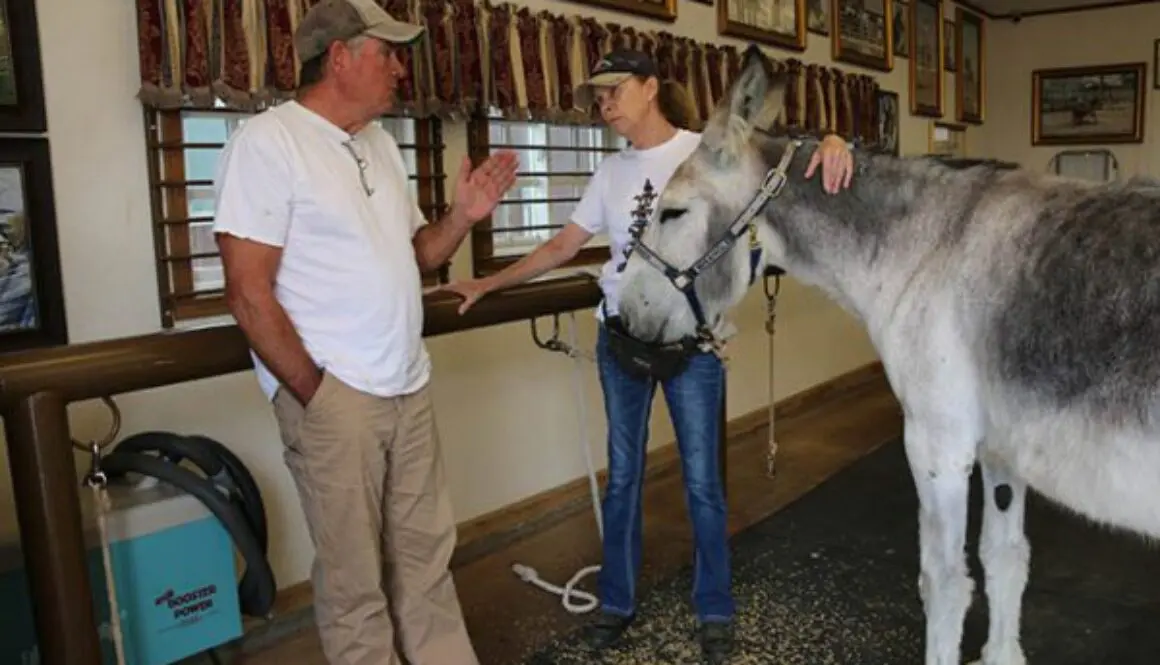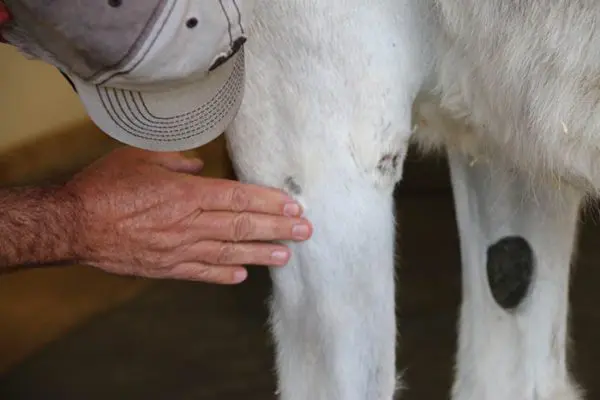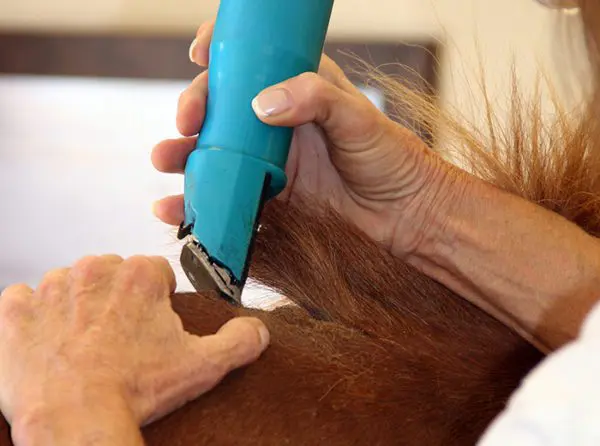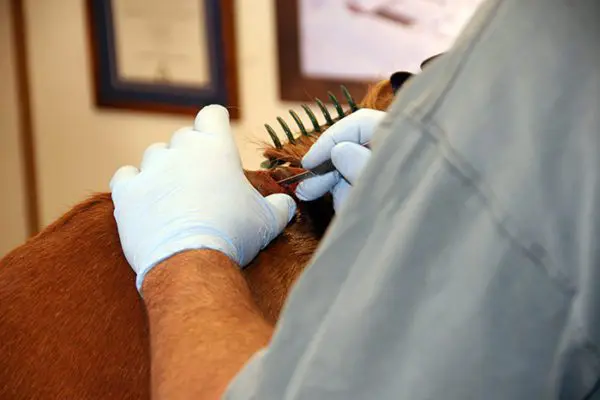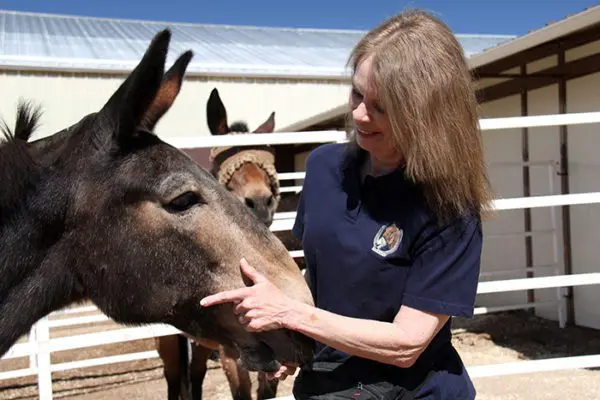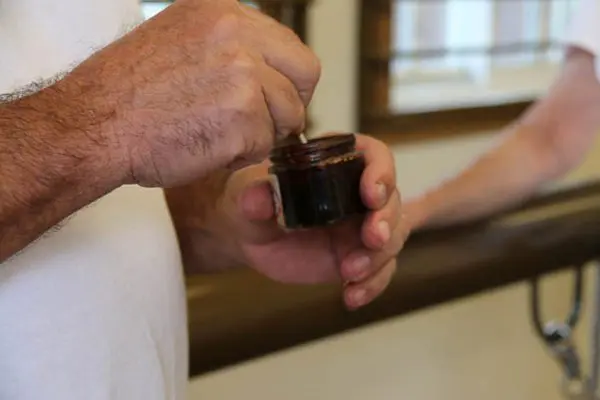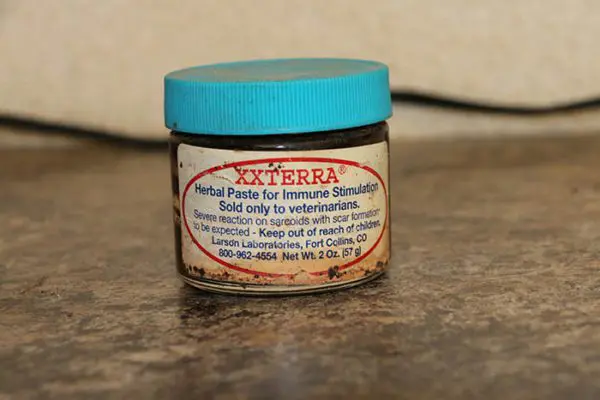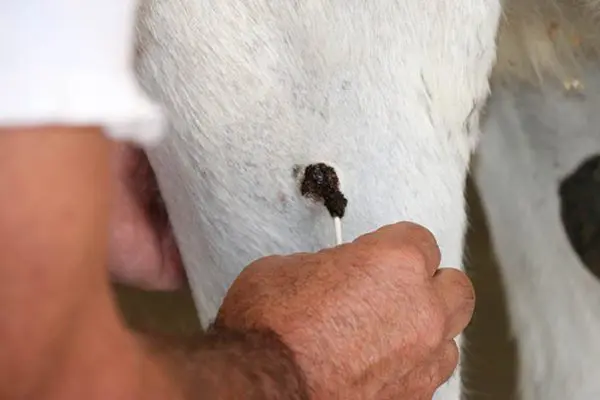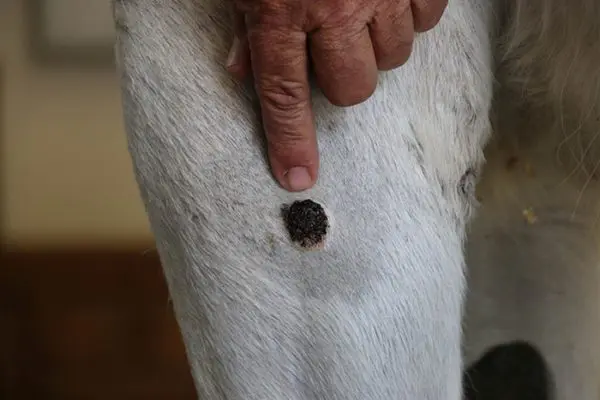Wrangler’s Donkey Diary: Sarcoid Treatment Again 1-29-20

Wrangler had his first sarcoid removal on 7-20-18, but we found another one just a few weeks ago starting under his right side. It looked like he had been rubbing it as it was a bit crusty. I had a mule that did that to a sarcoid and it eventually disappeared as did the other two that were on his body. He apparently built immunity against the sarcoids. So, we opted to wait and see if this one on Wrangler would also just go away. It didn’t and it was now the size of a golf ball and would need to be removed. We treated Wrangler’s prior sarcoid with Xterra because of its location in a vascular area, but this one could safely be surgically removed.

Our veterinarian, Greg Farrand, shaved the area for the IV catheter.

We opted to do the surgery in our tack and groom area where things could be kept clean. Kim handed Greg the catheter while I kept Wrangler steady. He wasn’t exactly thrilled, but he was a good boy!

In order to make sure he landed on his left side so Greg could reach the sarcoid that was on the right side, Chad and Steve took their positions on each side and guided him to the floor.

I shaved off the long, thick shaggy hair from his barrel around the sarcoid with my #10 blade and then Greg came back over the area with his closer cut blade. We put a fleece saddle pad under his head and covered his eyes with a bath towel.
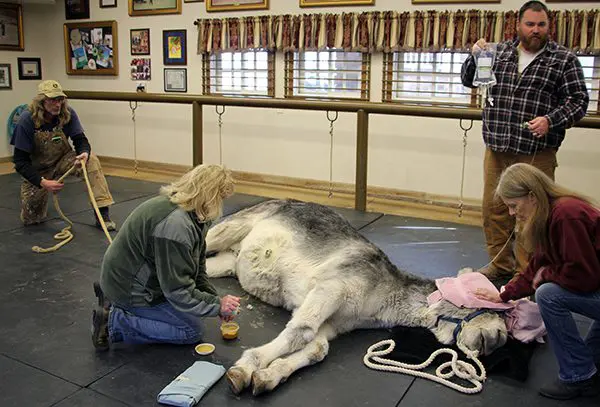
Kim prepped the area while Steve held the rope that was anchored around his hind leg to prevent any kicking if he began to wake up. Chad held the IV drip while I watched his head for unnatural breath and movement. But Wrangler just snored!

Greg carefully removed the sarcoid paying attention to getting it all. Wrangler just kept snoring!

After the sarcoid was removed, we opted not to do stitches and Greg used his Hyper Thermic machine that would trigger his immune system to fight any cells that might have not been removed. It could even cause the old sarcoid that was now dormant to drop off later if it worked to that extent. This treatment is one that replaced the old injections that used to be the follow-up treatment in sarcoid surgeries.

Kim cleaned the area afterwards and blotted the sponge onto the area to help the blood to clot.

The she removed the IV drip system from the catheter in his neck. It wasn’t long after before Wrangler began to wake up.
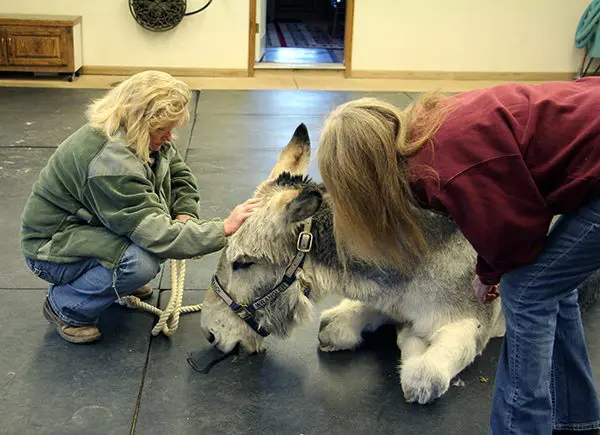
We kept him on his sternum and patiently waited until he was ready to try to get up. At first, he was a bit wobbly and stayed in a sitting position for a few seconds before rising to all four legs.
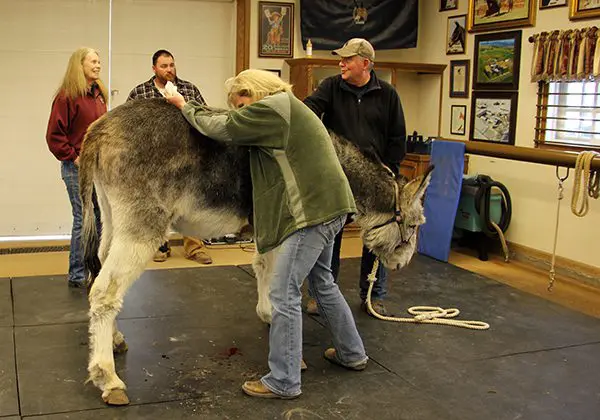
Once he was on all fours, we held the sponges up against his belly to further stop the blood until it could lot. Wrangler just “hung loose!”

When the blood finally clotted, we pulled the IV needle from his neck and then held sponges on that until it stopped bleeding. Wrangler was grateful to be awake again…well, sort of awake!

When he was showing some stability on his feet, we took a few circles around the room to get his circulation going again. We kept him walking intermittently around the room for about 30 minutes before putting him back in his stall and run. We removed all the bedding for a few days so it would not get stuck in the open wound that we would clean twice a day and treat once a day with Panalog until it is healed.

Wrangler didn’t have the where-with-all to be able to let out a full-fledged bray, but he did let out several grunts of appreciation to Dr. Greg as he left!


